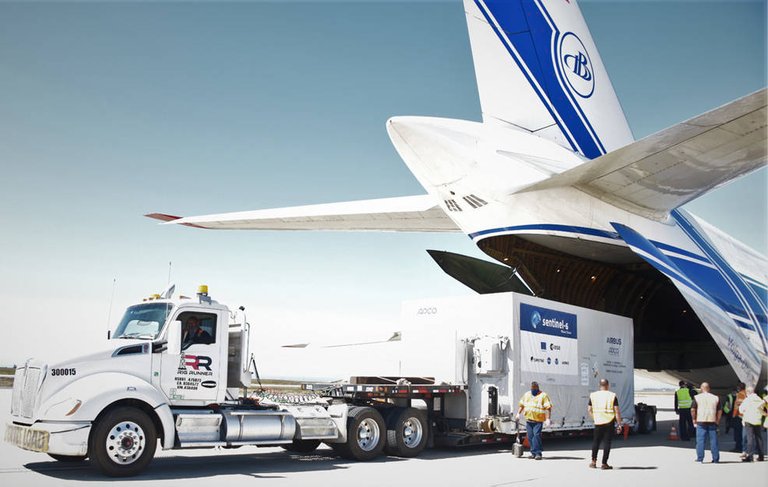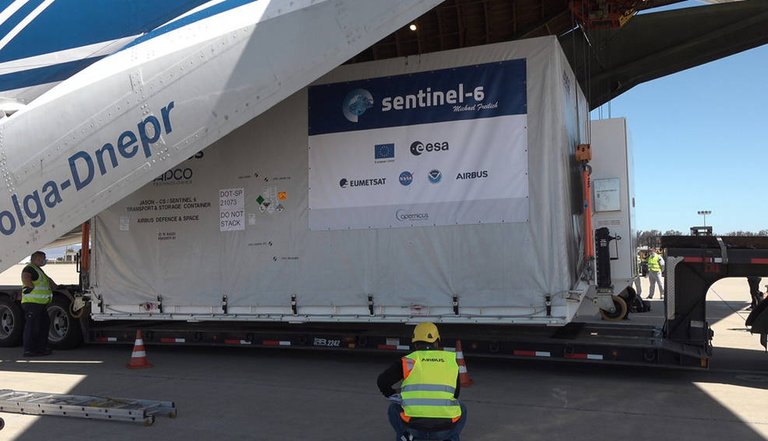Hello #Hivers, hope you all are doing good during this weekend with your friends and family. Today we are going to explore about a new sea level satellite that has reached the launch site at California yesterday on 25th of September 2020. We are going to discuss all about this new Satellite, but before that as usual first let's quickly discuss some basics before proceeding further into the main topic of our article.

Image credit: 30th Space Wing (Source: NASA )
A satellite is a moon, planet, or machine that rotates around a planet or star. For instance, Earth is a satellite since it rotates around the sun. Moreover, the moon is a satellite since it rotates around the Earth. For the most part, "satellite" alludes to a machine that is launched into space and moves around Earth or another body in space.
The ocean level hike is caused essentially by 2 variables known with associate unnatural weather change: the extra water from liquefying ice sheets and ice plenty and therefore the extension of seawater because it warms.
The Sentinel-6 Michael Freilich spacecraft will dispatch from the U.S. West Coast onboard a SpaceX Falcon 9 rocket in November.
The world's most recent sea-monitoring satellite has shown up at Vandenberg Air Force Base in Central California to be ready for its Nov. 10 launch. The result of a memorable U.S.- European association, the Sentinel-6 Michael Freilich spacecraft landed at Vandenberg in an Antonov 124 airplane at around 10:40 a.m. PDT (1:40 p.m. EDT) on Sept. 24 following a two-day venture from an IABG building office close to Munich, Germany.
The satellite is named after Dr. Michael Freilich, the previous director of NASA's Earth Science Division, and an instrumental figure in propelling sea perceptions from space. Sentinel-6 Michael Freilich is one of two indistinguishable spacecraft that make the Sentinel-6/Jason-CS (Continuity of Service) mission created in association with ESA (the European Space Agency). ESA is building up the new Sentinel group of missions to help the operational needs of the European Union's Copernicus program, the EU's Earth perception program oversaw by the European Commission. The spacecraft's twin, Sentinel-6B, will launch in 2025.

Image credit: 30th Space Wing (Source: NASA )
Once in the orbit, each satellite will gather ocean surface stature estimations down to the centimeter for over 90% of the world's seas. They'll be adding to an almost 30-year-long dataset worked by a continuous arrangement of the spacecraft that began with the TOPEX/Poseidon mission in the mid-1990s and that proceeds with today with Jason-3 . Instruments onboard the spacecraft will likewise give atmospheric information that will improve climate figures, help to follow storms, and support atmosphere models.
Even though Sentinel-6 Michael Freilich has just gone through rigorous testing, it will experience a last checkout at the SpaceX payload preparing office at Vandenberg to confirm that the satellite is solid and prepared for launch.
When tests are finished, Sentinel-6 Michael Freilich will be mounted on a SpaceX Falcon 9 rocket at Vandenberg Air Force Base's Space Launch Complex 4E. The dispatch is booked for 11:31 a.m. PST (2:31 p.m. EST) on Nov. 10.
Sentinel-6/Jason-CS is in effect mutually created by ESA, the European Organization for the Exploitation of Meteorological Satellites (EUMETSAT), NASA, and the National Oceanic and Atmospheric Administration, with financing support from the European Commission and specialized help from France's National Center for Space Studies (CNES).
Congratulations @science-popper! You have completed the following achievement on the Hive blockchain and have been rewarded with new badge(s) :
You can view your badges on your board and compare yourself to others in the Ranking
If you no longer want to receive notifications, reply to this comment with the word
STOPDo not miss the last post from @hivebuzz: